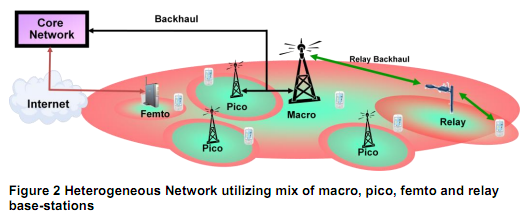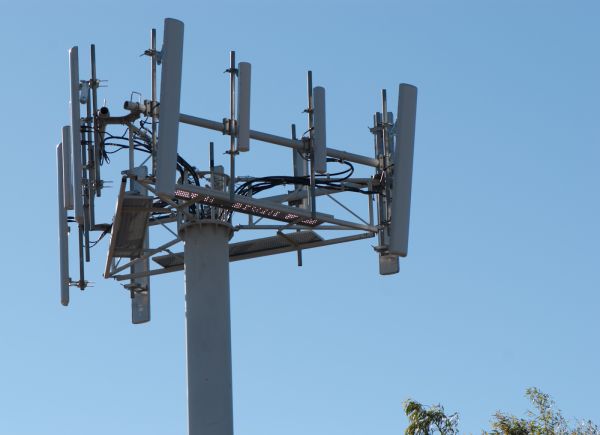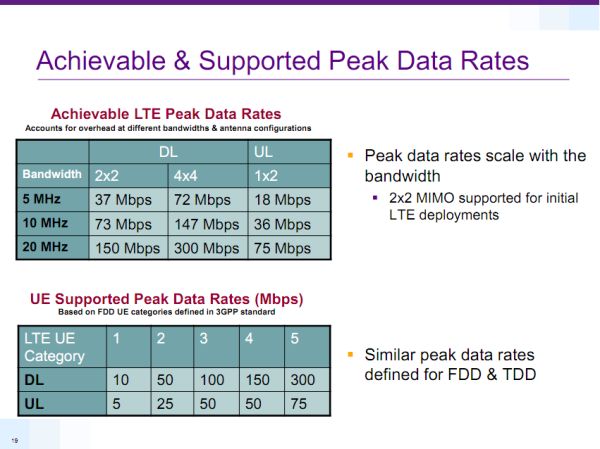Verizon and AT&T: State of the LTE Spectrum Union
by Jason Inofuentes on December 7, 2011 1:18 AM ESTIn two deals announced late last week, Verizon Wireless has expanded its spectrum holdings through deals that will give it control over various frequencies, almost all in the AWS space. This in the same week that AT&T had the door nearly entirely shut on them in their efforts to merge with T-Mobile. Though AT&T touted its desire to increase competition, produce more jobs in the United States and provide more and better services for its customers, spectrum was the real target of this acquisition. Ever hungry mobile data customers are the drive for bandwidth, and falling short of meeting your customers needs can be costly to a provider (just ask AT&T). There are several techniques that can be deployed for encoding more bits into each wave, but ask a firefighter what he wants to help fight a fire. More hoses will be the answer everytime, and in wireless that means more spectrum.
Where We Are, Where We're Going

Remember this guy? When Brian spent some time clarifying the HSPA+ state of the HP Veer 4G, he discussed modulation schemes used in current mobile data networks. The most efficient scheme currently in use is 64QAM, which provides enough density to encode a 6 digit binary number into a single wave. The ability to discern similar points in a QAM constellation becomes harder as they become more dense, and with HSPA+ and LTE we are approaching the limits of how spectrally efficient we can be. Going back to our firefighter analogy, firehose comes in various diameters. The larger the diameter, the harder the hose is to control. Implementing 128QAM would add another bit to each Hz, but increase the burden on each radio to discern between increasingly dense points on the plot.
What's next then? LTE-Advanced will fulfill the true potential promised by 4G mobile broadband networks, and will do so through a more crowded and complex arrangement than we have now. Right now, your phone is picking up signals from, most likely, more than one cell tower owned by or servicing your network provider. These towers serve many customers over a wide geographic area, and are referred to as macrocells. Your phone utilizes the tower that will provide it the fastest and most reliable connection, and this determination is made using several factors including interference from other nearby towers. If you are lucky, your phone will have (if supported) a MIMO connection with low SNR resulting in a high speed, low latency connection.

In Qualcomm's LTE-Advanced scheme, users would be served by a heterogenous network of relay basestations and pico- and femtocells, all operating together to provide fast mobile data that can service ever more customers at once. Unlike the macrocells, these small cells are distributed in an ad hoc manner, being placed in hotspots or coverage gaps. We've seen some of this in the deployment of picocells within AT&T and Apple stores in congested areas. It isn't enough to deploy these cells, though; it also becomes necessary to coordinate their operation with the macrocells, and this is the next step.
Verizon currently operates their network in a 22MHz chunk of the 700MHz spectrum, this is divvied up in a frequency duplexed scheme with 10MHz for downstream, 10MHz for upstream, and two 1MHz chunks at the sides. This all fits nicely with LTE's ability to use varying sized channels, in this case 10MHz serves upstream and downstream fine. Lower frequencies propagate through buildings better, so 700MHz is beneficial in urban areas where customers might not get any signal from higher frequency towers.
Now, add in some lower power small cells throughout the range of a single macrocell. Many of these smaller cells will be within buildings, or covering outdoor hotspots (think Times Square and Madison Square Garden). Those smaller cells don't necessarily need to worry about building penetration as they are either outdoors or already within the building they're trying to serve. As a result, that 700MHz frequency becomes less important, though they may still operate on them. Now, add in some of the channels that Verizon is acquiring; particularly a 20MHz chunk of AWS in Minneapolis, MN. Imagine that the whole channel is added for downstream operation. You now have multiple cells, with several channels to choose from, all operating in one geographic area. And that's just for LTE, the PCS spectrum they acquired could be added to their 3G and telephony networks for enhanced voice service and fallback data. One more picture to look at.
Those 20MHz chunks are where LTE really shines. By moving to 20MHz channels, current generation (Cat. 2) devices could more regularly hit their bandwidth limits of 50Mbps and next gen devices (Cat. 3/4) could jump to 100-150Mbps.
The New Land Grab, Spectrum Acquisitions
Now let's breakdown the two deals Verizon's made, and hope will get approved. Cricket Wireless is a regional operator that provides cellular services on spectrum it owns or leases within a given market. This is similar to ClearWire, though Cricket provides telephony services along with data services. Cricket, like ClearWire, intends to move to LTE and wants some of that coveted 700MHz spectrum. It just so happens, Verizon has 12MHz it isn't using in Block A of the 700MHz spectrum covering the Chicago area. So, Cricket gets 12MHz of building penetrating frequencies in the 3rd largest metropolitan region in the US, and Verizon gets 23 PCS and 13 AWS (Advanced Wireless Services) licenses in markets spread across the US. Since each chunk is regional, this won't mean that Verizon will have dozens of 20MHz channels blanketing the whole country, but with this deal alone they will have many 20MHz channels over many markets.
And what's so good about AWS? Mainly, it's available. AWS exists in the microwave spectrum, with downstream bandwidth provided between 2110MHz and 2155MHz, and upstream bandwidth provided between 1710MHz and 1755MHz. It was first put up for auction in 2006, and was almost entirely scooped up by T-Mobile for its 3G network.
The key to this deal is that Cricket isn't actually doing anything with these channels, nor is Verizon doing anything with their 12MHz. The FCC generally frowns on deals that will adversely affect customers of a service. So if Cricket were giving up their only operating frequency in Fresno, CA, there might be some push-back. As it is, the FCC shouldn't have anything to complain about. Indeed, by exchanging 700MHz spectrum they are basically creating an honest to goodness competitor in the Chicago area. And just to bear out how important these AWS acquistions are, Verizon is also throwing in $100 million to help build out Cricket's LTE network.

Spectrum Co. is a joint venture between Comcast, Time Warner Cable and Bright House, and was formed to manage a large portfolio of spectrum that could be used by the wired telcos to branch out into wireless services. The venture went nowhere, and it seems the trio is ready to cash out. So, for $3.6 billion Verizon will be purchasing 122 AWS licenses that undoubtedly cover some of the largest markets in the US. This won't be a straight sale, either. Verizon is essentially entering a partnership with Spectrum Co. that will enable them to directly sell Verizon services, or purchase them wholesale for use under their own branding.
Since all 122 of these licenses were being unused, the FCC won't be concerned about a loss of service to customers. What might strike some alarms is the notion that the largest cable telcos are going to be locked into offering only one wireless provider's services. This is obviously a strategic win for Verizon, but might be looked down on by regulators. It will be curious to see whether this is the end of Verizon's buying spree, there's only so much spectrum out there.
And AT&T? AT&T is awaiting approval from the FCC on their purchase of Qualcomm's MediaFLO 700 MHz spectrum. Qualcomm having bowed out of the mobile TV business is letting this slice of spectrum sit idle, so this deal should be approved any day now. The purchase of T-Mobile is a different story altogether. Though becoming the number one wireless provider in America has its appeal, the acquisition of spectrum is the driving force behind this deal. Combining AT&T's block of 700 MHz spectrum with T-Mobile's nationwide AWS spectrum would boost their LTE competitiveness. Mergers of this type receive thorough evaluation from technical, legal, consumer and anti-competitive perspectives. In their recent Staff Report, the FCC opined that while AT&T's competitiveness will improve, the merger will negatively affect the public and lead to higher prices. The release of this report succeeded AT&T and T-Mobile withdrawing their application with the FCC, after Chairman Genachowski requested that the merger be put through a hearing to determine approval. AT&T will continue their merger efforts with the Department of Justice, in the hopes that a positive result there could sway the FCC in a future submission. So overall, it looks a little grim at AT&T right now.
Wrap-up
LTE isn't going to get too much better at using the spectrum we feed it. To that end, if more and more customers are going to be demanding more and more mobile data, the only solution is to feed the beast. Verizon had a headstart with the first US LTE network, which celebrated its first birthday the other day. Now Verizon is taking the next step and, should the AT&T/T-Mobile merger fall through, may end up with a commanding lead in LTE spectrum. What remains to be seen is how this will play out for the consumer. If wireless providers follow the lead of their wired kin, we could end up with high prices to take advantage of this high performance. That sounds logical, until you see how poorly US broadband speeds scale with their price; $200 for 105 Mbps just isn't balanced against $42 for 1.5 Mbps.











38 Comments
View All Comments
jb510 - Thursday, December 8, 2011 - link
thisap90033 - Thursday, December 8, 2011 - link
I agree if the US government were involved it would cost 13 TRILLION Dollars and we would be talking about dial up for "high speed" lol....jb510 - Thursday, December 8, 2011 - link
I think you're missing the point.While one option might be for the government to build and manage the network, the point here really is to have a separate entity build and manage the physical network than the entities that provide service on that network. The purpose being to allow those that use the network to pool resources and function in a competitive environment where consumers could move between providers without changing hardware.
There could still be multiple types of networks each available to any provider that wanted to provide service on it. So you could still have a GSM network and a CDMA network... but if T-Mobile wanted they could offer a phone that roamed beween them both.
Using the popular "automotive analogy", what we have now is like have two sets of highways, one that is owned and built by Toyota paved with asphalt that only Toyotas can drive on and another is owned and built by GM paved with concrete that only GM's cars can drive on. This is incredibly inefficient and the consumer ends up paying for it because they are not as free as they should be to make a consumer coice to change. Consumers get to the end of the Toyota road only to see the GM road stretching further towards where they want to go, only they have to buy a new car to drive on it.
There is nothing technically impossible about building and selling phones that can roam between GSM & CDMA. It solely monopolistic practices at multiple levels designed to lock consumers in, those being restricted by contracts & restricted by single network hardware .
defaultPlayer - Tuesday, December 13, 2011 - link
A private company is building out a national wholesale LTE network - LightSquaredhttp://www.lightsquared.com/
They run the network and any provider can lease access to that network and sell access to customers. All providers lease access using the same nationwide network and will compete on price and features offered instead of on coverage since spectrum is limited and finite.
It'll be interesting to see how LightSquared's network performs against Verizon and AT&T's LTE. It's good to see a company take this approach and solely build out the network as a dumb pipe and leave it up to the carriers to sell it to customers and compete.
mcnabney - Wednesday, December 7, 2011 - link
I don't think that wireless is following the lead of Cable/DSL providers in charging more for higher speeds. Because wireless is so limited by spectrum they have pretty much almost all switched over to a metered usage plan. You might have also noticed that Verizon is doubling the GBs for LTE devices ONLY, making it effectively CHEAPER to user a higher speed service. I am guessing that their plan to make more money is to provide greater speed to encourage customer to use more and in turn choose larger buckets of data. This is probably best for the consumer because everyone gets to enjoy the best speeds, but only the heavy users pay more for it. Much more equitable and fair to all consumers.DigitalFreak - Wednesday, December 7, 2011 - link
"Though becoming the number one wireless provider in America has its appeal, the acquisition of spectrum is the driving force behind this deal."Sorry Jason, but I have to disagree with you there. The driving force behind this deal is to remove a competitor from the market. It has already been proven via leaked legal documents that AT&T knows it has plenty of spectrum to build out its national LTE network.
CrapONez - Thursday, December 8, 2011 - link
According to fact, and arguments by AT&T as to why the merger should be allowed, Deutsche Telekom is not interested in investing further in T-Mobile or building out an LTE network to compete. There is industry speculation, and AT&T argument, that T-Mobile will fail if nothing is done. So if the purpose was to eliminate a competitor, simply waiting would be far cheaper. AT&T is just trying to assure itself of the spectrum and the customers before they get scattered to the winds.justaviking - Wednesday, December 7, 2011 - link
Jason wrote: "That sounds logical, until you see how poorly US broadband speeds scale with their price; $200 for 105 Mbps just isn't balanced against $42 for 1.5 Mbps"Are you saying we should pay $2,940 for 105 Mbps?
That comes from $28/Mbps based on the low-speed pricing. (42/1.5*105)
Or are you saying we should only pay $2.87 for 1.5 Mbps?
That's comes from $1.90/Mbps based on the high-speed pricing. (200/105*1.5)
What sort of scaling (balance) are you suggesting?
joshv - Wednesday, December 7, 2011 - link
Is $200/105Mbps a good deal compared to $42/1.5Mbps? Perhaps, but you are comparing technologies separated by half a decade at least. Compare what $42 bought you in HD space 5 years ago to what it buys you today.Zoomer - Wednesday, December 7, 2011 - link
For a connection to just my phone that will be used sparingly, 1.5 Mbps is more than sufficient. 80-90% of the time when I can use it will be at work, home etc where a wifi connection will be superior.